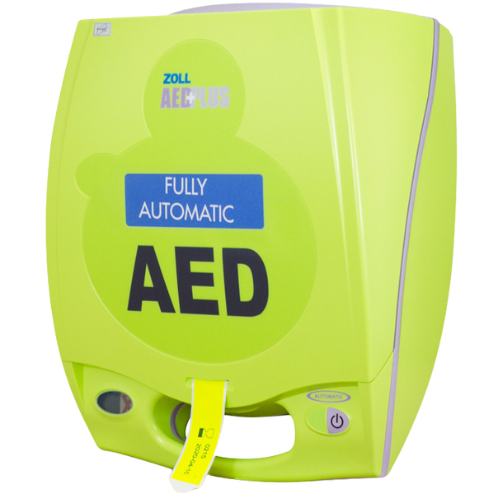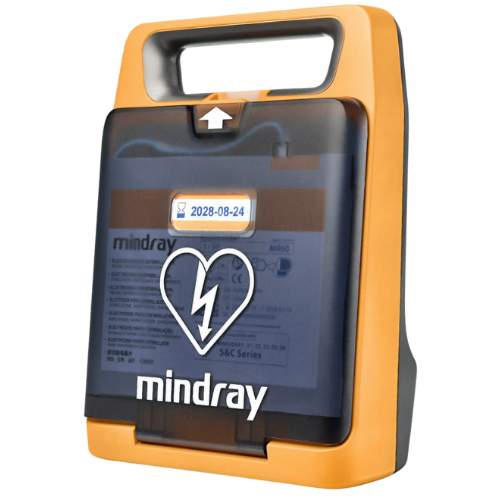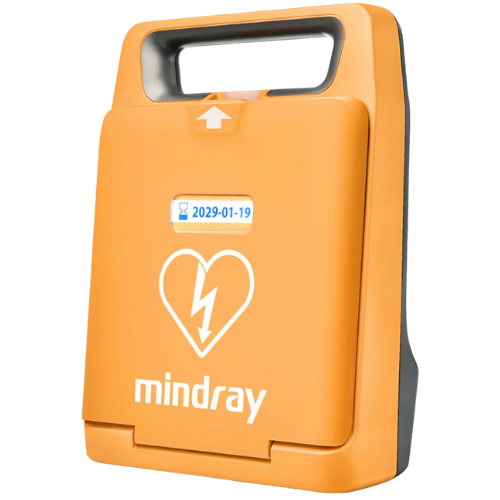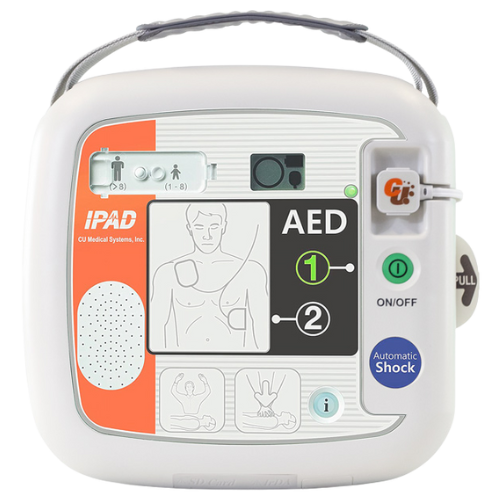defibrillators & AEDs for office-use
If someone in your household is at risk of sudden cardiac arrest, having an AED nearby can make all the difference. But you don’t want a bulky, complicated machine cluttering up the kitchen or hallway.
You need something compact, reliable and easy to use under pressure, even if you’ve never done first aid training.
Here are our picks for the best home-use defibrillators:
What makes these defibrillators good for office-use?
HeartSine Samaritan PAD 360P (Fully Automatic) Defibrillator
Why it’s ideal for home:
Weighs just 1.1kg—easy to store in a cupboard or wall cabinet.
Fully automatic. No button pressing. If a shock’s needed, it does the job for you.
Voice prompts and flashing icons guide you through each step, even if you’ve never used one before.
One of the best water/dust ratings (IP56), so it handles being stored in less-than-perfect spots (e.g., under the stairs or in a garage).
Perfect if you want a ‘fit and forget’ unit that’s ready the moment it’s needed.
iPAD SP1 Fully Automatic Defibrillator
Why it’s ideal for home:
Loud voice prompts that adjust to background noise (TV blaring? No problem).
Clear visual indicators help guide you without second-guessing yourself.
Switch easily between adult and child mode—no need to change the pads.
Performs daily, weekly and monthly self-tests, so it’ll always be ready.
Perfect if you’ve got children or vulnerable adults in the house.
Mindray BeneHeart C1A Fully Automatic Defibrillator
Why it’s ideal for home:
Offers step-by-step help that adapts to how confident you are. Slower, clearer prompts if you hesitate. Straightforward guidance if you’re confident.
Delivers a shock in under 8 seconds with QShock™ tech—one of the fastest on the market.
Sleek, modern design that doesn’t look like hospital equipment.
Perfect if you want cutting-edge tech and peace of mind, all in one.
Mindray BeneHeart C2 Fully Automatic
Why it’s ideal for home:
Features a large colour screen with animations to walk you through each step.
QShock™ technology delivers a shock fast—ideal in a high-stress emergency.
Automatically adjusts instructions based on how you respond—slower and more detailed if it senses hesitation.
Combines modern design with durability, so it fits well in a family home.
Perfect if you want reassurance through on-screen support and fast action.
ZOLL AED Plus Fully Automatic
Why it’s ideal for home:
Offers real-time CPR feedback—telling you to “push harder” or “good compressions,” which is a huge help under pressure.
Long-lasting pads and batteries (up to five years), so you won’t be constantly checking for replacements.
One-piece pad design makes application easier and quicker.
Perfect if someone in the household has basic CPR training and you want help staying on track during compressions.
Other home defibrillator FAQs
-
While training helps, AEDs are designed for untrained users. They guide the user through every step. But having at least one trained first aider is always a smart move.
-
That depends on layout and staff numbers. If the building is spread out or has multiple floors, you may need more than one to meet recommended response times (ideally under 3 minutes).
-
Most modern units perform self-checks and alert you when something needs attention. You’ll usually just need to replace pads and batteries every 4–5 years.
-
For offices without much training, fully automatic is easier and quicker. If you’ve got trained staff, a semi-automatic gives them a bit more control.
You can find our guide on Fully Automatic Vs. Semi Automatic Defibrillators here.
-
Somewhere visible, accessible and clearly marked—kitchen areas, reception or corridors near the loos are common spots. Avoid locking it away in a cupboard.
Any other questions?
Contact us here or phone us on 0330 056 3023.










